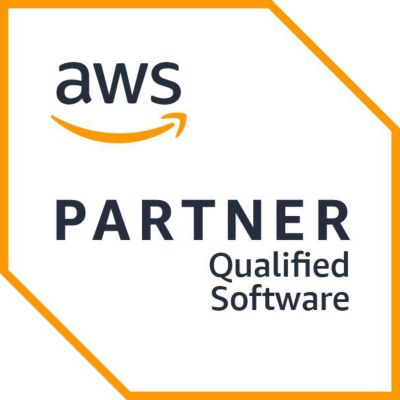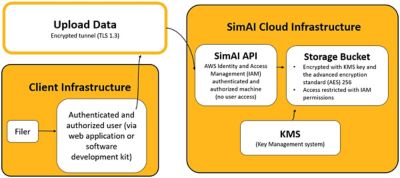Across industries, product development teams are constantly challenged to produce better designs at a faster pace to meet consumer demands. For this reason, running high-performance computing (HPC) simulations in the cloud has become a desirable solution for getting optimal designs to market on schedule. At the same time, emerging artificial intelligence (AI) technologies have presented another opportunity to accelerate production and enhance simulation workflows.
By combining the power of AI with cloud computing on Amazon Web Services (AWS), Ansys’ latest AI-based technology, the Ansys SimAI cloud-enabled generative AI platform, enables organizations to reach even greater levels of innovation at a rapid pace. With the SimAI platform, you can train an AI model using previously generated data from Ansys products or other sources and assess the performance of a new design in minutes, increasing the potential for your projects, products, and workflows.
Still, does AI in the cloud give you pause? Do you worry about data security? It’s a fair concern, but the reality is that with robust cybersecurity systems and protocols in place, your data is often more secure in the cloud than on local machines or on-premises servers. For more insights on how to secure your data in the cloud, refer to our recent blog, Understanding Data Security for Ansys Cloud Workloads. In the same way, Ansys customers can trust that their SimAI platform data is secure, from initial upload throughout model building and prediction runs. Let’s explore the benefits of a cloud-native platform and the stringent security measures in place with the SimAI platform.

The Ansys SimAI cloud-enabled generative AI platform boosts the prediction of model performance by 10 to 100 times across all design phases — delivering simulation results in minutes, not hours.
Use AWS to Enhance AI
The SimAI platform is a physics-agnostic software as a service (SaaS) application that combines the predictive accuracy of Ansys simulation with the speed of generative AI via the cloud. In fact, the combination boosts product development performance by 10 to 100 times across all design phases for computation-heavy projects. You can rapidly test design alternatives without the constraints of traditional solvers, which can include parametrization challenges, complex user interfaces, extensive learning curves, and long wait times for results.
The SimAI platform is intuitive and easy-to-use. It is designed for users without coding experience or deep learning expertise. This makes AI-powered simulation more accessible to nonexperts. But what are the advantages of its cloud-native infrastructure?
By removing hardware barriers, cloud-enabled platforms increase simulation throughput, which accelerates data generation and enables you to run deep-learning inference with ease. As the term suggests, deep-learning inference is the stage when an AI model infers what was learned during training. On-premises platforms, in contrast, slow down the AI pipeline orchestration, which includes data conversion, model adaptation, training, and inference serving.
Similarly, the cloud offers greater storage, portability, and scalability than on-premises platforms. In addition, cloud computing encourages collaborative workflows with easier, shared access to organizational data. In short, cloud benefits are especially helpful when training AI models.
However, in some organizations, cloud migration can pose challenges, including adjusting to workflows in the cloud, financing cloud technology, and hesitation for noncloud users.
The SimAI platform provides a turnkey solution with a secure infrastructure. First, cloud computing is inherent to the platform and included automatically. This reduces the time, cost, and adjustment of typical cloud implementation. Here are the typical steps for using the platform:
- Data upload: Upload your training data to the SimAI platform, where it is stored securely on remote servers to ensure smooth integration.
- Model training: Select variables of interest, set your desired wait time, launch the training process in the cloud, and receive notifications upon completion.
- Prediction: Upload your 3D geometry, run the prediction with a single click, and access results in minutes, including volume, surface, evolution curves, and coefficients.
The SimAI platform is architected on AWS by keeping in account the security and architecture best practices from the AWS Well Architected (WA) Framework. The AWS WA Framework describes key concepts, design principles, and architectural best practices for designing and running workloads in the cloud. It is based on six pillars: operational excellence, security, reliability, performance efficiency, cost optimization, and sustainability.
Securely Train AI
The SimAI platform is engaged in three simple steps: upload data, train the AI model, and predict. To get started, simply select the files that you wish to use and upload them to the platform either by using a web application directly through your browser or by using a Python software development kit (PySimAI SDK) compatible with Python version 3.9 or higher. PySimAI is publicly available with documentation. Your data is securely stored in an encrypted data bucket in Amazon Simple Storage Service (S3) and transferred through an encryption tunnel protected by transport layer security (TLS) 1.3 — the most recent and strongest version of the TLS security protocol.
Once your data is uploaded to the SimAI platform, you can configure a model and initiate training with confidence that your data remains secure throughout all stages of the workflow. The architecture performing training and inference is hosted in the AWS Europe region (eu-west-1, Ireland), using the best security practices.

The Ansys SimAI platform is qualified by the AWS Foundational Technical Review, which is based on the AWS Well Architected (WA) Framework.

Connect with the SimAI platform using a web application directly through your browser (left) or by using a Python software development kit (PySimAI SDK) compatible with Python version 3.9 or higher (right).
Know Your Infrastructure
The SimAI platform is multitenant with logical separation through tenant- and user-based ownership. In other words, customers have access only to their own data. In a similar manner, simulations are run on tenant-exclusive, ephemeral-allocated instances and all read objects are copied, used, and then destroyed.
As another layer of security, the SimAI platform infrastructure is managed using an infrastructure as code (IAC) model on Kubernetes (k8s) clusters using Amazon Elastic Kubernetes Service (EKS). What does this mean? Put simply, k8s clusters are groups of nodes that run containerized applications. This enables multiple applications to run securely in a more efficient, scalable way. As a result, the benefits of the IAC model are maximized.
In addition, Ansys’ internal services are secured by a firewall and virtual private network (VPN) while client-accessible web applications and application programming interface (API) endpoints use an industry-grade authentication and authorization service. Accordingly, SimAI platform user accounts are managed through this service, which verifies access to the platform using a customer identity provider (IdP). For example, the platform may delegate authentication to a client’s IdP to ensure that the client controls who has access to the service. Data transfer is possible only after authentication and authorization.
The AI training and inference on Amazon EC2 use the robust, secure foundation provided by the AWS Nitro System. It includes a highly secure hypervisor designed to deliver strong resource isolation and performance that is nearly indistinguishable from a bare metal server. Postprocessing tasks on Amazon EC2 also benefit from the enhanced security and efficiency of the Nitro System, ensuring that data integrity and processing speeds meet the rigorous demands of modern AI applications. For more information on the AWS Nitro System, refer to the AWS whitepaper The Security Design of the AWS Nitro System.
Also, your storage — that is, your Amazon S3 data bucket — is protected with AWS Key Management Service (KMS) encryption owned only by ephemeral compute instances, which use the advanced encryption standard (AES) 256. AES-256 is considered the strongest encryption method available, requiring a 256-bit key. Additionally, access is filtered and restricted by AWS Identity and Access Management (IAM) permissions, including guardrails and access controls.

Embrace AI on AWS
Cybersecurity systems and protocols not only protect data but ease user concern about cloud computing and build confidence in cloud-native solutions. Leading cloud providers, such as AWS, have superior cybersecurity and encryption resources to safeguard data more effectively than most organizations can manage alone.
By using AI in the cloud, engineers and designers can amplify the power of simulation, transcend previous compute limitations, gain relief from AI pipeline IT complexity, and maintain data security.
Learn more about AI-powered innovations at Ansys.














